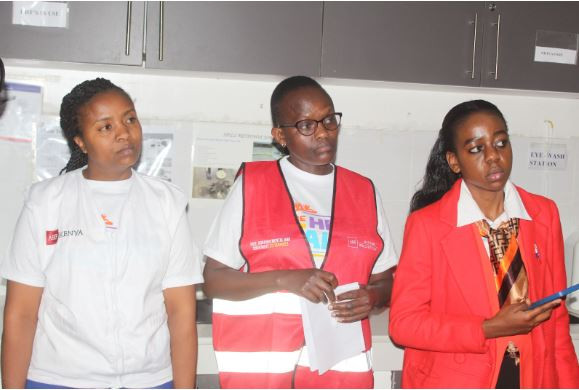
Malaria, a disease that continues to claim millions of lives worldwide, has proven to be one of the most persistent and challenging public health crises.
Despite decades of progress in treatment and prevention, the disease remains a significant threat to global health.
With nearly half of the world’s population at risk, particularly in sub-Saharan Africa, efforts to eradicate malaria have been complicated by the evolving nature of the disease, the parasites that cause it, and the mosquitoes that transmit it.
Despite global investment exceeding 3.5 billion dollars annually in malaria control and elimination, progress has stalled in recent years. The Covid-19 pandemic further disrupted malaria prevention and treatment services, reversing years of progress in many endemic regions.
While much of the focus on malaria has been on human-centred solutions, new research has turned to an unlikely source for understanding and potentially combating the disease: chimpanzees.
Recent findings suggest that chimpanzees have evolved unique genetic mechanisms that help them resist malaria, offering potential new avenues for human treatment and prevention strategies.
Malaria is caused by Plasmodium parasites, transmitted through the bite of infected Anopheles mosquitoes.
- New vaccine targets mosquito weak spot, offering hope for malaria fight
- Scientists develop innovative mosquito treatment to combat Malaria
- One man's 30 years of toil to save Sierra Leone's orphaned chimps
Keep Reading
Recent research published in the journal Science has revealed that chimpanzees possess unique genetic mechanisms that help them combat malaria more effectively than humans.
This collaborative study, involving 84 researchers across Africa, Europe, and North America, provides compelling evidence that chimpanzees have evolved specialised genetic defenses against the disease.
“We’ve discovered that chimpanzees have developed genetic adaptations that mirror some of humanity’s strategies against malaria, but with important differences that could inform new treatment approaches,” explains Dr Mimi Arandjelovic from the Max Planck Institute for Evolutionary Anthropology in Germany, a lead author of the study.
Chimpanzees share approximately 98 per cent of their DNA with humans, making them crucial for understanding our evolutionary history and the biological foundations of diseases such as malaria and HIV/Aids.
Genetic relationship
This close genetic relationship means findings from chimpanzee research could significantly advance human malaria prevention and treatment strategies.
The research reveals a fascinating pattern: chimpanzees living in forested habitats, where malaria parasites are abundant, have evolved specific genetic adaptations absent in their savannah-dwelling counterparts. These forest environments, with their higher humidity and denser mosquito populations, have exerted stronger selective pressure for malaria resistance.
To conduct this comprehensive study, researchers collected fecal samples from 388 wild chimpanzees across 30 populations representing all four chimpanzee subspecies.
By analysing the exomes—the protein-coding regions of the genome—scientists identified genetic variations specifically linked to malaria resistance.
The researchers identified key genes such as GYPA (involved in the invasion of red blood cells by the malaria parasite) and HBB (involved in sickle cell anaemia, which provides partial malaria resistance in humans) that have undergone selection in forest-dwelling chimpanzee populations.
While humans and chimpanzees both face the threat of malaria, they’ve developed different genetic strategies to combat it.
Humans have evolved specific mutations like the sickle cell trait and G6PD deficiency that provide partial protection against malaria in certain populations. These adaptations come at a cost—carriers of these traits can suffer from genetic disorders.
Dr Ezekiel Mecha, a senior lecturer and immunologist at the University of Nairobi, explains, “Unlike humans, who rely on mutations like the sickle cell trait to reduce malaria severity, chimpanzees have evolved more intrinsic resistance mechanisms that prevent the malaria parasite from thriving in their bodies.”
Among these adaptations is the DARC receptor gene, which regulates the entry of Plasmodium parasites into red blood cells, and specialised HLA variants that enhance immune surveillance against the parasite. These genetic factors allow chimpanzees to mount a more comprehensive defense against malaria infection.
One of the study’s most significant findings is that both humans and chimpanzees appear to have limited genetic pathways for evolving malaria resistance. This suggests that there are only a few biological routes to effectively combat the disease.
“The fact that malaria resistance follows a few evolutionary pathways has enormous implications for vaccine development,” says James Jacob Wabwile, a molecular biologist and bioinformatician. “It means researchers don’t need to explore an endless range of genetic variations. Instead, we can focus on mimicking these key genetic modifications that have proven effective in chimpanzees.”
The research on chimpanzee malaria resistance is already informing vaccine development strategies.
For instance, chimpanzee research has contributed to the development of drugs like Tafenoquine, which treats Plasmodium vivax malaria, and vaccines such as RTS,S/AS01 (brand name Mosquirix, the first malaria vaccine recommended by WHO for widespread use in children in moderate to high transmission regions.
More recently, the R21/Matrix-M vaccine, which has shown up to 77 per cent efficacy in clinical trials, represents another promising advance. The Kenya Medical Research Institute (KEMRI) has been actively involved in testing this vaccine, building on its earlier pivotal role in developing RTS,S/AS01.
 The Standard Group Plc is a multi-media organization with investments in media
platforms spanning newspaper print
operations, television, radio broadcasting, digital and online services. The
Standard Group is recognized as a
leading multi-media house in Kenya with a key influence in matters of national
and international interest.
The Standard Group Plc is a multi-media organization with investments in media
platforms spanning newspaper print
operations, television, radio broadcasting, digital and online services. The
Standard Group is recognized as a
leading multi-media house in Kenya with a key influence in matters of national
and international interest.











